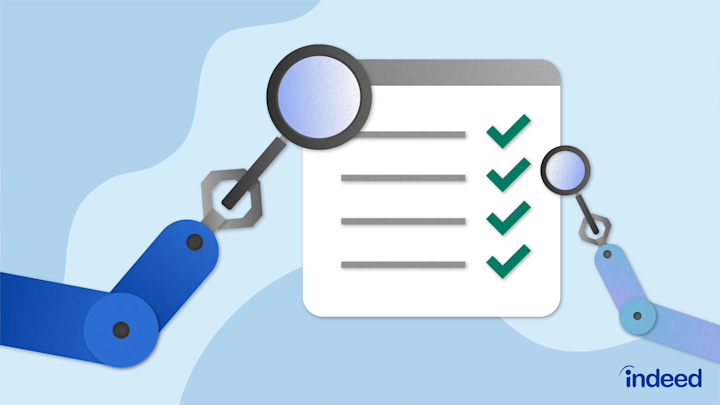Automation Testing Frameworks: Simplifying Intricate Testing Scenarios
Automation Testing Frameworks: Simplifying Intricate Testing Scenarios
Blog Article
From Guidebook to Automated Screening: A Comprehensive Overview to Transitioning Smoothly and Effectively
In the realm of software screening, the shift from guidebook to automated procedures has actually ended up being an increasingly crucial change for organizations seeking to boost performance and precision in their testing methods. As modern technology remains to breakthrough, the demand for reliable and smooth automated testing approaches has never ever been a lot more important. The trip from guidebook to automated testing is not without its obstacles, but when approached tactically and with a clear strategy in mind, the benefits can be significant - automation testing. In this thorough guide, we will discover vital steps and considerations crucial for a successful shift, from the preliminary selection of tools to the assimilation of automation right into existing operations. Stay tuned to reveal the understandings that will help lead the way for a smoother and more efficient screening procedure.
Advantages of Automated Examining
Automated screening provides many benefits, boosting performance and precision in software advancement processes. Automated tests can be run simultaneously on multiple gadgets and operating systems, dramatically speeding up the screening stage compared to hands-on testing.
Furthermore, automated testing makes certain a higher level of precision in detecting problems. Consistency in testing is also enhanced, as automated tests perform the very same steps specifically each time they are run.
Choosing the Right Tools

To start with, analyze your goals and requirements. Comprehend the scope of your project, the modern technologies included, and the capability of your group. This analysis will certainly assist you determine the features and capabilities you need in your screening devices.
Secondly, take into consideration the compatibility of the devices with your existing systems and processes. Smooth integration with your existing software application advancement lifecycle is important to make certain a smooth shift to automation.
Furthermore, assess the scalability and adaptability of the tools. As your screening requires progress, the devices need to have the ability to adapt and suit modifications effectively.
Last but not least, consider the support and area around the devices. When executing automated screening, robust support and an energetic user community can give useful sources and assistance. By meticulously thinking about these facets, you can choose the right devices that line up with your needs and established the phase for a successful transition to automated testing.
Writing Effective Examination Manuscripts

When crafting test manuscripts, it is vital to consider the specific demands of the software application being examined and make certain that the manuscripts resolve all vital functionalities. Descriptive and clear calling conventions for examination manuscripts and test situations can enhance readability and maintainability. In addition, integrating error handling mechanisms within the test scripts can assist in identifying and attending to problems promptly.
Furthermore, arranging examination manuscripts into modular elements can boost reusability and scalability, decreasing redundancy and boosting efficiency in test manuscript upkeep. Regular testimonials and updates to test scripts are crucial to keep speed with developing software program requirements and capabilities. By following these concepts, testers can create durable and effective test manuscripts that contribute considerably to the success of automated screening procedures.
Integrating Automation Into Workflows
By seamlessly incorporating automated testing devices like Selenium or Appium into the software application advancement lifecycle, teams can accomplish faster feedback on code modifications, leading to quicker pest discovery and resolution. This assimilation permits for continuous testing throughout the advancement process, making certain that any type of concerns are identified early on, resulting in higher software application high quality. Proper assimilation of automation tools calls for cooperation in between development, testing, and procedures groups to develop a unified workflow that maximizes efficiency and efficiency in supplying top notch software application products.
Making Certain a Smooth Change
Efficiently transitioning to automated testing includes thorough planning and cautious execution to maximize and lessen interruptions performance in the software program advancement procedure - automation testing. To make sure a smooth shift, it is important to start by performing a detailed assessment of the present testing processes and recognizing locations where automation can bring the most significant advantages. Engaging with all stakeholders at Get More Information an early stage while doing click to find out more so, including developers, testers, and task supervisors, is critical for gathering assistance and buy-in for the automation initiative
Communication is essential during this transition stage. Clear communication of the objectives, advantages, and assumptions of automated testing helps to handle any kind of resistance or problems that might develop. Additionally, providing ample training and resources for employee to upskill in automation tools and strategies is crucial for ensuring an effective change.

Verdict
In conclusion, transitioning from guidebook to automated testing uses many benefits, consisting of raised efficiency and integrity. By selecting the suitable tools, composing effective examination scripts, and integrating automation effortlessly right into workflows, organizations can guarantee a effective and smooth transition. It is important to welcome automation as a beneficial possession in software application testing processes to enhance general high quality and efficiency.
In the realm of software program testing, the shift from handbook to automated processes has actually come to be an increasingly important transition for companies looking for to boost performance and accuracy in their testing techniques. Automated tests can be next page run all at once on multiple gadgets and operating systems, dramatically speeding up the screening stage compared to hand-operated screening. Consistency in testing is also boosted, as automated examinations perform the same steps precisely each time they are run.To make certain the successful implementation of picked testing tools, the development of effective test scripts plays an important function in confirming the performance and performance of automated procedures - automation testing. By complying with these concepts, testers can produce effective and durable test scripts that add dramatically to the success of automated testing processes
Report this page